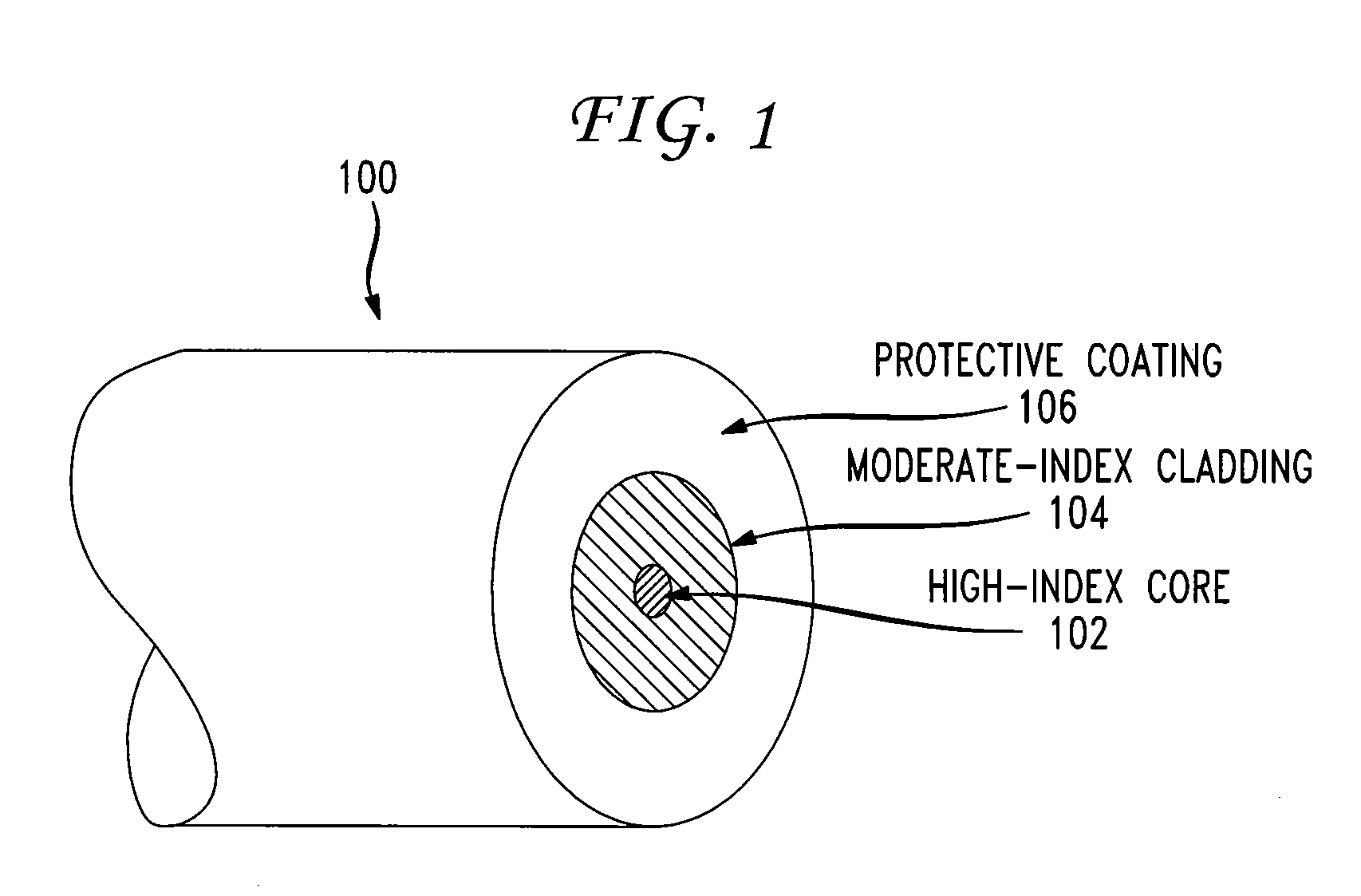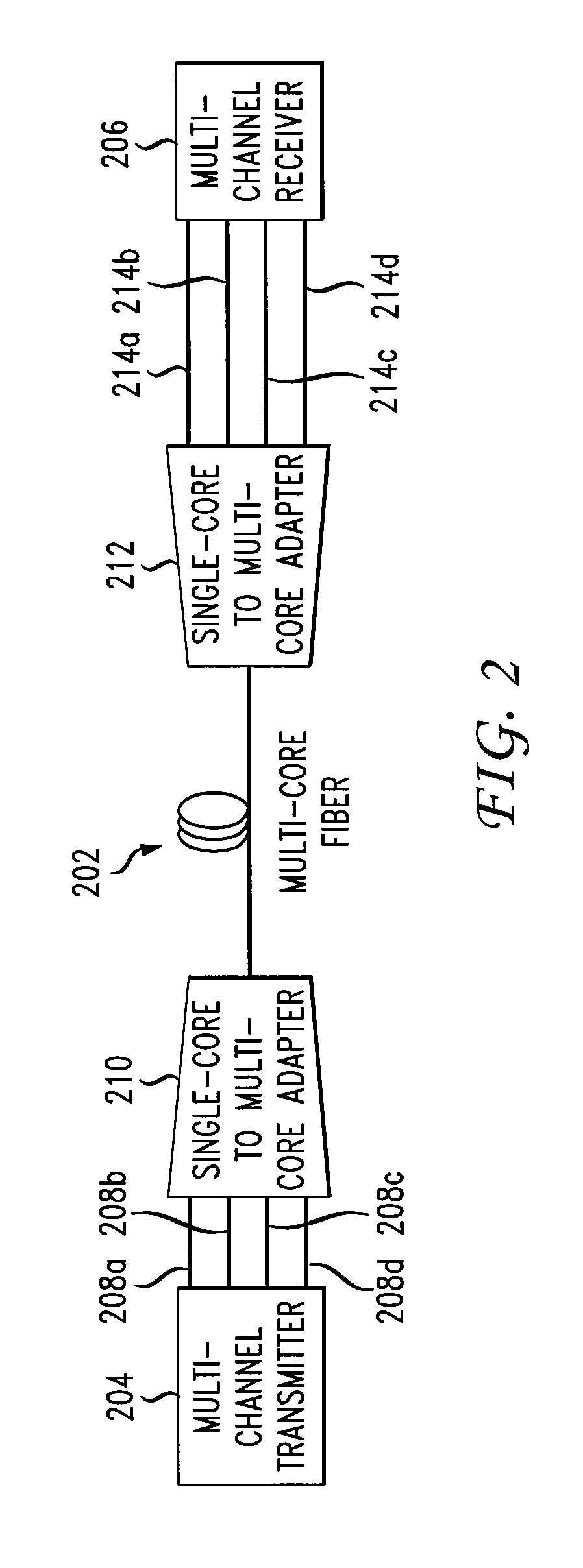Multicore Optical Fiber with Reduced Inter-Core Crosstalk
inter-core crosstalk technology, applied in the direction of cladded optical fibre, instruments, optical elements, etc., can solve the problems of weak and unstable mode coupling, high cost, complex and expensive transceivers at the endpoints of such links, and the ultimate channel capacity may be severely compromised, so as to reduce inter-core crosstalk and reduce inter-core crosstalk in a multi-core optical fiber
- Summary
- Abstract
- Description
- Claims
- Application Information
AI Technical Summary
Benefits of technology
Problems solved by technology
Method used
Image
Examples
Embodiment Construction
[0020]A multicore fiber is an optical fiber having multiple separate cores embedded in a cladding region, and each core provides a separate spatial mode for propagating optical signals. FIG. 2 illustrates a communication system using a multicore fiber. As illustrated in FIG. 2, a multicore optical fiber 202 is connected between multi-channel transmitter 204 and a multi-channel receiver 206. It is to be understood that the multi-channel transmitter 204 and the multi-channel receiver 206 can both be implemented using a transceiver capable of transmitting and receiving optical signals. The multi-channel transmitter 204 may receive multiple data signals. For example, the data signals may be electrical signals representing streaming data. The multi-channel transmitter 204 can divide each data signal into multiple subsignals, modulate the subsignals of a data signal onto optical carrier waves having different wavelengths, and multiplex the resulting optical subsignals for each data signal...
PUM
 Login to View More
Login to View More Abstract
Description
Claims
Application Information
 Login to View More
Login to View More - R&D
- Intellectual Property
- Life Sciences
- Materials
- Tech Scout
- Unparalleled Data Quality
- Higher Quality Content
- 60% Fewer Hallucinations
Browse by: Latest US Patents, China's latest patents, Technical Efficacy Thesaurus, Application Domain, Technology Topic, Popular Technical Reports.
© 2025 PatSnap. All rights reserved.Legal|Privacy policy|Modern Slavery Act Transparency Statement|Sitemap|About US| Contact US: help@patsnap.com



